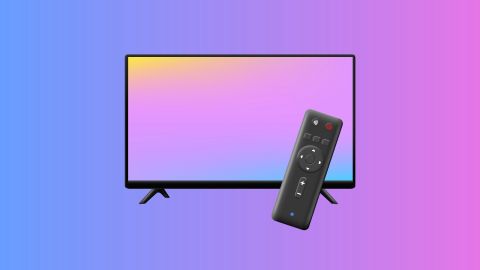Digital Noise Reduction (DNR) is a feature in modern
TVs designed to enhance picture quality by reducing visual noise—random speckles or graininess that can appear in images, especially in low-resolution or analogue content. This technology works by analysing and filtering out unwanted visual artefacts, resulting in a cleaner and smoother image. DNR is particularly beneficial when watching older broadcasts, DVDs, or content from sources with weak signals, as it helps to minimise flickering and improve overall clarity. However, it is important to note that while DNR can enhance certain types of content, it may also soften fine details in high-definition or 4K videos, potentially leading to a less sharp image. Therefore, understanding how DNR functions and when to utilise it can help viewers optimise their television's performance for various types of content.
Also explore:
32-inch LED TVsHow DNR works in televisions
DNR operates by analysing the video signal and identifying inconsistencies or 'noise' that do not align with the intended image. It then processes these anomalies, smoothing out the picture by reducing random speckles and graininess. This is achieved through algorithms that compare frames and filter out discrepancies, effectively enhancing the visual quality of the content. For instance, Samsung's Digital Noise Filter reduces analogue noise created during signal transmission, filtering out disturbances to restore sharp details on the screen. While DNR is effective for improving low-resolution or noisy content, it is worth noting that excessive application can sometimes lead to a loss of fine detail, making the image appear overly smooth or 'waxy'.
Check out:
Android TV Benefits of DNR for picture quality
- Enhanced clarity: DNR reduces visual noise, resulting in a clearer and more defined image, particularly beneficial for low-resolution or analogue content.
- Improved viewing experience: By minimising flickering and graininess, DNR provides a more comfortable and enjoyable viewing experience.
- Optimised performance for older content: DNR is especially useful when watching older broadcasts, DVDs, or content from sources with weak signals, as it enhances the overall picture quality.
- Customisable settings: Many televisions offer adjustable DNR settings, allowing users to fine-tune the level of noise reduction according to their preferences and the specific content being viewed.
- Energy efficiency: By reducing the need for additional processing to manage visual noise, DNR can contribute to more efficient energy consumption during television operation.
Discover more:
40-inch TV When to enable or disable DNR
Enabling DNR is advantageous when viewing low-resolution or analogue content, such as older television broadcasts or DVDs, where it can significantly improve picture clarity by reducing visual noise. However, when watching high-definition or 4K content, it is often preferable to disable DNR, as it may soften fine details and diminish the sharpness of the image. Modern televisions typically offer adjustable DNR settings, allowing users to customise the level of noise reduction based on the content being viewed. Experimenting with these settings can help achieve the optimal balance between noise reduction and image sharpness, enhancing the overall viewing experience.
DNR in modern TV models
| TV Model | DNR feature | What does it mean for you |
| Samsung Smart TVs | Digital Noise Filter with adjustable settings (Off, Low, Medium, High, Auto) | Allows customisation of noise reduction levels to suit different content types. |
| Sony Bravia Series | DNR and MPEG NR settings for image noise reduction | Enhances picture quality by reducing noise without compromising resolution. |
| LG Smart TVs | Noise Reduction with multiple levels | Provides flexibility to adjust noise reduction based on viewing preferences. |
| Panasonic Viera Series | 3D DNR technology for advanced noise reduction | Utilises spatial and temporal filtering for clearer images in various lighting conditions. |
| TCL Smart TVs | DNR settings accessible through the picture menu | Offers straightforward adjustments to improve image clarity on lower-resolution content. |
These features are commonly found in modern televisions, including options like a
42-inch smart TV, providing users with the tools to enhance their viewing experience through effective noise reduction technologies.
Before you decide, explore the
latest offers. You may find a great deal on a model that matches your needs.
Visit your nearest Bajaj Finserv partner store to browse through a wide selection of products. Choose the TV or any other appliance that matches your needs. Convert the total cost into Easy EMIs and enjoy a repayment period of up to 60 months. Bajaj Finserv offers this flexible financing option on over 1 million products.
Explore TVs on Easy EMI with Bajaj Finserv
Discover a range of TVs on Bajaj Mall. Once you have gathered all the necessary details, visit the nearest Bajaj Finserv partner store to pick your preferred TV. Complete your purchases with Bajaj Finserv’s financing options, which set a predefined spending limit. Furthermore, you have the option to choose a suitable repayment plan, enabling you to pay in Easy EMIs. After learning all the information on Bajaj Mall, you can opt for Bajaj Finserv’s financing options.
Benefits of shopping with Bajaj Finserv’s financing options
- Affordable pricing: Find the best prices on TVs at Bajaj Finserv partner stores, ensuring an affordable purchase that does not compromise on quality.
- Easy EMIs: Bajaj Finserv makes purchasing your TV easy with flexible payment plans through Easy EMIs, giving you the freedom to budget.
- Zero down payment: No upfront cost is required! Selected TV models come with a zero down payment option so that you can pay gradually over time.
- Wide range and accessibility: Access an extensive variety of TVs at Bajaj Finserv partner stores, ensuring you get the right fit for your needs.
- Free home delivery available: Get complimentary home delivery on select TV models for a hassle-free shopping experience.











